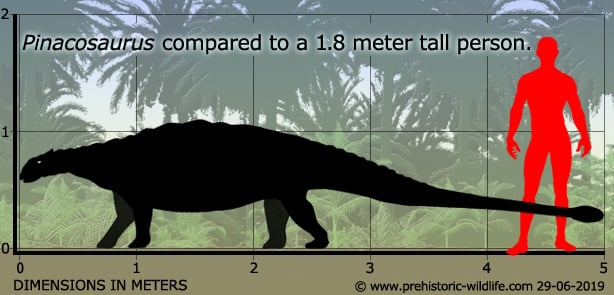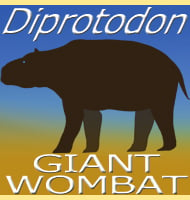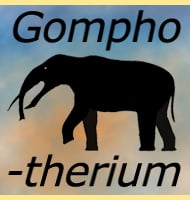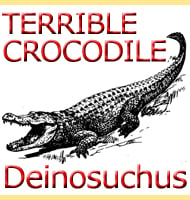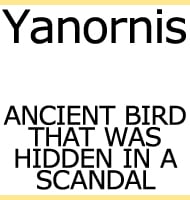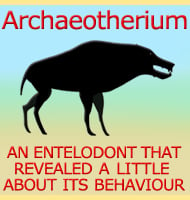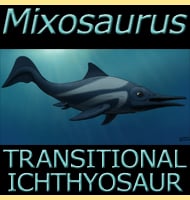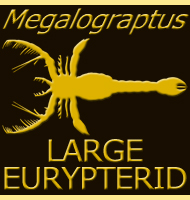In Depth
So far Pinacosaurus appears to have been one of the most numerous of the Asian ankylosaurs given the large numbers of fossil remains that have been found for this genus. This large number combined with the high level of preservation in many of the specimens mean that the validity of the genus is without question. However at the time of its initial description by Gilmore, Pinacosaurus was actually considered to have been a nodosaur, a member of a group of armoured dinosaurs that are considered to be both related and ancestral to ankylosaurs, though they continued to live alongside ankylosaurs after they appeared. For clarity, Pinacosaurus is today regarded as an ankylosaurine ankylosaur, which means that it is related to more advanced ankylosaur forms. Out of these genera Pinacosaurus has been considered to be more closely related to Minotaurasaurus (Thompson et al 2011, below).
Pinacosaurus was your atypical ankylosaur, wide stocky body, armoured scutes down the back, club tail, all mounted on four short stocky legs. The defining characteristic that makes Pinacosaurus stand out from other ankylosaur genera more than anything else are the egg shaped holes in the skull that appear where the nostrils are normally located. Sometimes these holes are arranged in two pairs, but in a juvenile specimen they numbered five pairs. Why the number of pairs varies is uncertain, perhaps juveniles had more than adults, perhaps they represent another new species of Pinacosaurus. Why they were there is also a mystery, though ankylosaurs are noted for having more complex nasal passages than other types of dinosaur, adaptations that reduced moisture loss through respiration in arid environments. This does not sufficiently explain why Pinacosaurus had extra holes when other genera did not need them however. It may be that the holes were a sexually selected characteristic that allowed Pinacosaurus to identify one another from amongst the other ankylosaur genera of late Cretaceous Asia such as Talarurus.
An exciting find associated with Pinacosaurus is the discovery of several juveniles that died while nestled together. It is believed that these individuals were suffocated by being buried in a sand storm, but it is not so much the circumstances of the death that matter, but the fact that they all died together. Finds like this prove that at the very least juveniles would live in groups, presumably for the greater protection afforded from predators since several individuals have a much better chance at spotting potential predators than just one. We still don’t know for certain if ankylosaurs like Pinacosaurus lived in groups when they were adults, but plant eating animals often do cluster and travel together to make it harder from them to be singled out by predators.
The only way that this could be speculated with greater confidence for ankylosaurs is if many adults were found buried together at what would have been about the same time, such as a bonebed deposit of mostly if not exclusively a single species, however the circumstance for this to happen would be rare events, and made even rarer when you add to the mix that those remains need to fossilise. Finding single individuals may also be misleading when at other times in a group only one individual was likely to die at a time through old age/disease/predator attack, and by the time the next group member died the group could be many miles away. The distance between expected remains would also increase when you remember that not all remains would fossilise, furthering the idea that such animals were solitary. As already mentioned however, the only current proof of group living in Pinacosaurus living together is in the collections of juveniles.
The heavy armour of the body and club tail of ankylosaurs served one purpose above all others; to make them too tough for predators to kill. Small predators such as Linheraptor, Byronosaurus and Velociraptor would have been of little to no threat to a fully grown adult Pinacosaurus, and even developed juveniles would have been tough targets for them. A more serious threat is however hinted at by the presence of indeterminate tyrannosaur remains from the same formations that Pinacosaurus individuals are known from. Some of these remains might belong to Alectrosurus, while others are too incomplete to reveal which genus they belong too, but we do know that even medium sized tyrannosaurs would have been big and powerful enough to have a serious chance of killing a juvenile Pinacosaurus, with larger genera having a shot at even adult Pinacosaurus. This would especially be the case if they were capable of flipping them over onto their backs to strike at the unarmoured belly.
Further Reading
- Two new dinosaurian reptiles from Mongolia with notes on some fragmentary specimens, Charles W. Gilmore - 1933. - A new species of the ankylosaurid dinosaur Pinacosaurus from the Late Cretaceous of Inner Mongolia (P.R. China), P. Godefroit, X. Pereda-Suberbiola, H. Li and Z. Dong - 1999. - A New Specimen of Pinacosaurus grangeri (Dinosauria: Ornithischia) from the Late Cretaceous of Mongolia: Ontogeny and Phylogeny of Ankylosaurs, R. V. Hill, L. W. Witmer, M. A. Norell - 2003. - Juvenile specimens of Pinacosaurus grangeri Gilmore, 1933 (Ornithischia: Ankylosauria) from the Late Cretaceous of China, with comments on the specific taxonomy of Pinacosaurus, M. B. Burns, P. J. Currie, R. L. Sissons, V. M. Arbour - 2011. - Phylogeny of the ankylosaurian dinosaurs (Ornithischia: Thyreophora), Richard S. Thompson, Jolyon C. Parish, Susannah C. R. Maidment & Paul M. Barrett - 2011. – Postcrania of juvenile Pinacosaurus grangeri (Ornithischia: Ankylosauria) from the Upper Cretaceous Alagteeg Formation, Alag Teeg, Mongolia: implications for ontogenetic allometry in ankylosaurs. – Journal of Paleontology. 89 (1): 168–182. – Michael Burns, Tatiana Tumanova & Philip Currie – 2015.
